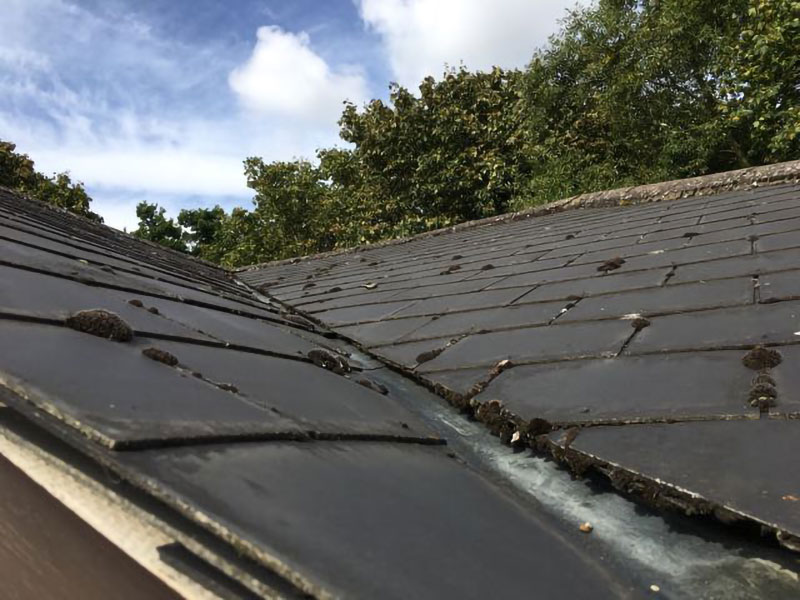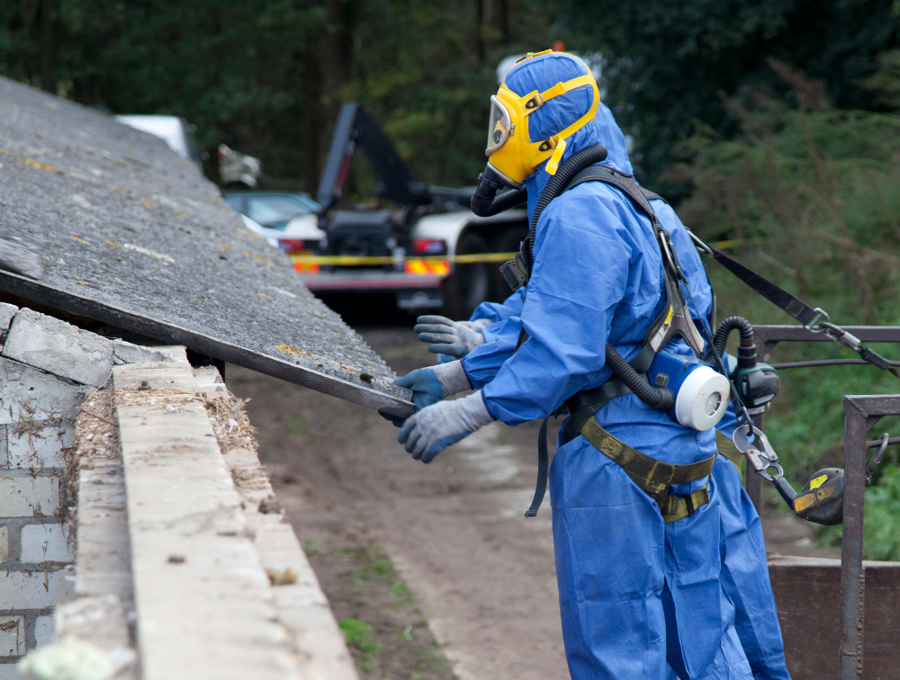Asbestos Roof Removal Health Risks Commercial Roofing Contractor For Removal
Asbestos Roof Removal Health Risks Commercial Roofing Contractor For Removal
Blog Article
Risk Communication Regarding Asbestos Removal Safe, Reliable And Experienced Removal Services
Asbestos management plans are critical instruments for the safe dealing with and control of asbestos materials in numerous environments. With the health risks related to asbestos exposure, including lung disease and different critical respiratory conditions, having a complete management plan is essential for any facility that will include asbestos.
The creation of asbestos management plans involves a radical assessment of the premises where asbestos may be present. This contains identifying the kinds of materials that contain asbestos and evaluating their situation. Regular inspections are needed as a end result of the integrity of asbestos-containing materials can degrade over time, elevating the chance of airborne asbestos fibers.

Once the assessment is conducted, the plan should embody clear procedures for managing asbestos safely. This includes guidelines on the way to deal with, maintain, and, if needed, remove asbestos-containing materials. Proper labeling and signage are additionally necessary to ensure that employees and visitors are aware of areas which will pose a risk.
Long-Term Effects Of Asbestos Roof Removal Cost Guide For Asbestos Removal
Training and schooling play a major role in the profitable implementation of asbestos management plans. Employees who could come into contact with asbestos must be educated concerning the hazards, safe work practices, and emergency procedures. Regular training periods may help keep safety at the forefront of workplace culture.
The management plan should define particular obligations for employees and management. Designating an asbestos coordinator can streamline the process of monitoring, reporting, and communicating about asbestos-related issues. This individual serves as some extent of contact for questions and considerations concerning asbestos safety.
Documentation is a key side of asbestos management plans. Maintaining accurate records of inspections, incidents, training, and maintenance activities is essential for accountability and ongoing risk assessment. This documentation can also prove invaluable in case of regulatory inspections or legal inquiries.
Choosing The Right Method For Asbestos Roof Removal What To Do If You Find Asbestos
In addition to identifying materials and implementing safe dealing with practices, the plan should define response protocols for asbestos-related emergencies. Indoor Air Quality Post Asbestos Roof Removal. These protocols ought to include measures to comply with in the event of a cloth breach or suspected fiber launch. Providing clear steps might help mitigate risks and guarantee swift action
Periodic evaluate and updating of the asbestos management plan are important to replicate any adjustments in regulations, office situations, or materials current. Continuous enchancment is important to adapt to new info or applied sciences associated to asbestos safety. Stakeholders should be involved in this process to ensure that the plan stays related and effective.
Asbestos Roof Removal Project Planning Safe, Reliable And Experienced Removal Services
Compliance with local and national regulations regarding asbestos is non-negotiable. Organizations must keep knowledgeable about relevant laws and guidelines that govern asbestos handling and disposal. This helps avoid legal penalties and enhances the general safety tradition inside the organization.
Community awareness is another essential think about effective asbestos management plans. Engaging with local authorities, health agencies, and the community can foster a larger understanding of asbestos-related issues. This collaboration ensures that each one events are informed about potential risks and safety measures in place.
Asbestos management plans don't function in isolation; they are a part of a broader health and safety technique. By prioritizing the well-being of staff and the encompassing community, organizations can contribute to a safer environment. The integration of asbestos management with other safety protocols permits for a holistic strategy to workplace safety.
Asbestos Roofing Material Identification Asbestos Roof Maintenance Services
The objective of an asbestos management plan isn't just compliance but also proactive risk management. By successfully identifying hazards and implementing mitigation methods, organizations can considerably reduce the probability of asbestos exposure. This commitment to safety in the end protects each employees and the underside line.
Effective communication concerning the asbestos management plan is crucial for fostering a culture of safety. Clear dissemination of information ensures that everybody understands the risks and the measures in place to mitigate them. Providing transparent reporting channels encourages staff to voice concerns and contribute to safety efforts.
Finally, the importance of periodic monitoring cannot be overstated. Regular audits of the asbestos management plan assist identify areas for improvement and confirm that safety measures are followed. Continuous evaluation creates a suggestions loop, promoting a safer working environment.
In summary, asbestos management plans function crucial frameworks for controlling and managing the risks related to asbestos exposure. Through thorough assessment, effective communication, ongoing training, and regular updates, organizations can create safe environments for his or her workers and the community. The focus should always be on proactive measures, compliance with regulations, and a robust safety tradition.
Evaluating Contractors For Asbestos Roof Services Commercial Roofing Contractor For Removal
By guaranteeing that each facet of the plan is well-executed, organizations can considerably decrease the risks tied to asbestos materials. This ongoing commitment to safety won't solely protect individuals but also improve organizational status and trust.
Continuous adaptation and refinement of asbestos management plans will finally result in a more educated workforce that prioritizes safety above all. Such a tradition is essential for attaining long-term safety targets and ensuring the health of all stakeholders involved.
Asbestos Roof Encapsulation Alternatives Asbestos Storm Damage Services
Ultimately, the well-being of workers and the environment should guide the development and implementation of any asbestos management strategy. By remaining vigilant and diligent of their method, organizations can navigate the complexities of asbestos management successfully.
In conclusion, the roadmap for asbestos safety is challenging but very important. A fastidiously crafted and executed asbestos management plan, full with thorough assessments, communication protocols, and ongoing education, lays the groundwork for a safe and compliant workplace. This proactive strategy fosters a protective environment for all these concerned, solidifying the dedication to safety for the longer term.
- Asbestos management plans define protocols for identification, assessment, and management of asbestos-containing materials in varied settings, particularly in buildings.
- Regular inspections and risk assessments are critical components of an asbestos management plan, ensuring ongoing monitoring and updated info relating to potential hazards.
- Training for personnel on asbestos awareness and safety measures is important, making certain that workers are educated about the risks and procedures related to asbestos exposure.
- Development and maintenance of an inventory of asbestos locations, types, and conditions allow for knowledgeable decision-making when planning renovations or demolitions.
- Emergency response procedures tailor-made for asbestos-related incidents assist minimize health risks during surprising situations involving asbestos disturbance.
- Effective communication strategies inside a company inform all stakeholders of asbestos management plans, highlighting obligations and inspiring a tradition of safety.
- Documentation of all asbestos-related actions, together with removal, encapsulation, or repair, is important for compliance with regulatory standards and for future reference.
- Stakeholder engagement, including occupants and neighboring properties, is vital to lift awareness and handle issues relating to asbestos management and safety practices.
- Integrating asbestos management plans with general health and safety insurance policies can create a cohesive method to office safety and environmental health.
- Regular critiques and updates of the asbestos management plan ensure relevance and effectiveness, adapting to any changes in regulations, building occupancy, or material situation.undefinedWhat are asbestos management plans?
Synergistic Effects Of Asbestos Exposure Commercial Roofing Contractor For Removal

Asbestos management plans are paperwork that define the method to manage asbestos on a property. They detail the placement, situation, and types of asbestos-containing materials, together with methods for safe monitoring, maintenance, and mitigation.
Why do I need an asbestos management plan?
An asbestos management plan is essential for shielding health and safety. It ensures that all potential asbestos hazards are recognized and managed appropriately, minimizing the danger of exposure to individuals on the property.
Importance Of Professional Asbestos Removal Diy Awareness For Asbestos Removal
Who is responsible for creating an asbestos management plan?
Typically, the property proprietor or employer is liable for developing and implementing an asbestos management plan. It is commonly beneficial to consult with certified professionals or licensed asbestos surveyors to ensure compliance with regulations.

How often should my asbestos management plan be reviewed? Indoor Air Quality Post Asbestos Roof Removal.
Using Technology In Asbestos Roof Removal Removal Of Asbestos Roof In Area
Asbestos management plans should be reviewed a minimal of each 12 months or whenever important changes happen on the property, such as renovations or injury to areas containing asbestos. This ensures that the plan remains up-to-date and effective.
What should I do if my asbestos management plan identifies risks?
If risks are recognized, immediate action must be taken based on the plan. This could include repair, encapsulation, or removal of asbestos materials by licensed professionals, together with notifying affected people about the risks and safety measures.
Can I manage asbestos points myself and not using a plan?
Safe Asbestos Roof Removal Techniques Removal Of Asbestos Roof In Area
It is not advisable to manage asbestos points and not utilizing a formal plan. Improper handling can lead to critical health risks and legal penalties. Consulting a certified professional is essential for safety and compliance with regulations.
How do I find a certified professional for my asbestos management plan?
To discover a certified professional, look for licensed asbestos consultants or surveyors in your area. It is essential to envision their certifications, experience, and reviews to ensure they meet regulatory requirements and have a great observe report of safety.
Asbestos Roof Removal Machinery And Tools Risks Associated With Asbestos Roofs
What happens if I don’t have an asbestos management plan?
Lack of an asbestos management plan can lead to non-compliance with local regulations, resulting in heavy fines, legal liability, and elevated health risks for occupants. It is essential to have an effective plan in place to manage asbestos safely.
Is training required for those handling asbestos management plans?
Yes, individuals involved in managing asbestos should receive appropriate training. This consists of understanding the risks, the specifics of the management plan, and safe work practices. Regular training ensures everybody is ready to answer potential asbestos points successfully.
successful asbestos roof removal stories go to the website Report this page